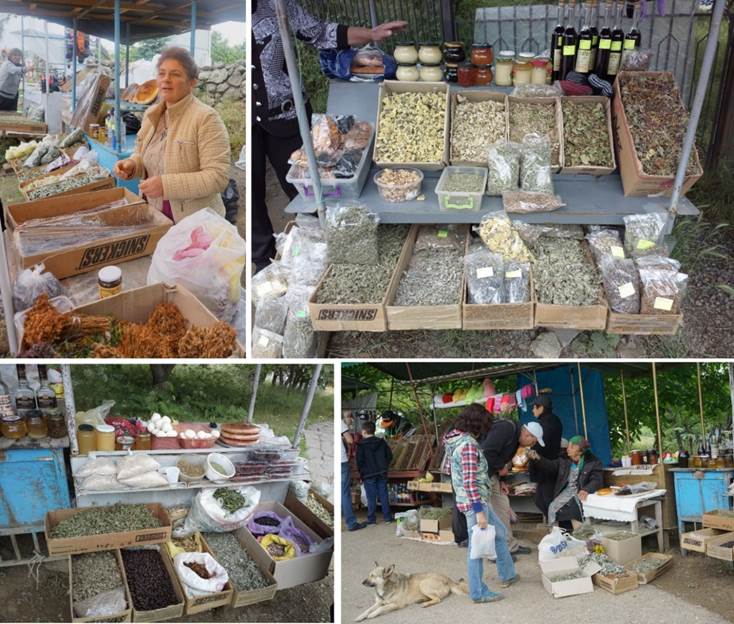Phytomedicinal Knowledge and “Official” Sources in Tatev (Armenia)
Abstract
Ethnographic investigations in the villages of the Tatev community in southern Armenia reveal the positive attitude of the local community toward “official” sources (e.g., printed books, administrative officials, and people of higher education) on herbal medicine and the belittling of their own traditional ethnobotanical knowledge. Although this may be a global phenomenon, we observe and discuss particular reasons specific to the post-Soviet context as conditioned by politics and propaganda. Nowadays, the local population gather and use a minimum of forty wild plants (ethnotaxa) mostly for nutritional, medicinal, and aromatic (tea and flavoring) purposes. Biological species of the traditionally used medicinal plants of the Tatev community were identified, and preparation methods and purposes of the herbal remedies were recorded. The most frequently and traditionally used medicinal plants of the Tatev community belong to these genera: Mentha, Thymus, Ziziphora, Hypericum, Knautia, Arctium, Plantago, Tanacetum, Rosa, and Sambucus.
References
Allayarov, Kh. A. 1993. The History of Traditional Medicine in Central Asia. Unpublished Doctoral Dissertation, Scientific Research Center “Medical Museum” of the Russian Medical Academy, Moscow (in Russian).
Ayvazyan, Ye. 1927. The Doctor in Our Village. Female Worker of Armenia 11:28 (in Armenian).
Bashkuev, V. Yu. 2017. The Confrontation between Soviet and Tibetan Medicine in the Late 1920s–Early 1930s. Power 2:157–162 (in Russian).
Blium, A. V., and D. Farina. 1998. Forbidden Topics: Early Soviet Censorship Directives. Book History 1:268–282.
Boldyrev, R. 2017. Propaganda of Health and Hygiene in the USSR [web page]. Available at: http://infosplanet.info/plakaty-i-listovki/propaganda-zdorovya-i-gigieny-v-sssr/. Last accessed on February 1, 2019 (in Russian).
Eaton, K. B. 2004. Daily Life in the Soviet Union. Greenwood Press, Westport, Connecticut, London.
Ghazanchyan, M. 2013. Medicinal Plants for Everyone. Prescriptions and Remedies. Luys, Yerevan (in Armenian).
Grigorov, N. 1891. Village Tatev. Collection of Materials for Describing the Localities and Tribes of the Caucasus 13:59–125 (in Russian).
Harutyunyan, M. 1927. “Liberating” Midwife. Female Worker of Armenia 9:17 (in Armenian).
Hovhannisyan, J. 2005. Green Box of Medicine. Zangak-97, Yerevan (in Armenian).
International Society of Ethnobiology. 2006. International Society of Ethnobiology Code of Ethics (with 2008 additions) [web page]. Available at: http://ethnobiology.net/code-of-ethics/. Accessed on February 1, 2019.
Khudabashian I. 1917a. Criminal Abortion. Healthy Life 1:4–6 (in Armenian).
Khudabashian I. 1917b. Preventive Means against Birth Fever. Healthy Life 4:19–22 (in Armenian).
Knaus, W. A., and N. A. Petroff. 1982. Inside Russian Medicine: An American Doctor's First-Hand Report. Everest House Publishers, New York, NY.
Lisitsyan, S. 1969. Armenians of Zangezur. AS Arm. SSR, Yerevan (in Armenian).
Malkhasyan, B. J. 1929. Trachoma and the Fight Against It. Healthy Lifestyle 1:16–18 (in Armenian).
Markwick, R. D. 2013. Censorship and Fear: Historical Research in the Soviet Union. Groniek, 46:371–385.
Medynskiy, E. N. 1952. Public Education in the USSR. Academy of Pedagogical Sciences of the RSFSR, Moscow (in Russian).
Mirakyan I. 1930. Doctor's Comments. Healthy Life 2-3:43–44 (in Armenian).
Mikhlin, V. M., and V. A. Kiryak. 1985. Non-classical healing: the past and the present. “Stiynets”, Chisinau (in Russian).
Ohanyan. 1917. The Oculist’s Discussions. The Eyes of the Elderly People. Healthy Life 6-7:9–13 (in Armenian).
Phillips, S. D. 2004. Waxing Like the Moon: Women Folk Healers in Rural Western Ukraine. Folklorica 9:13–45.
Plamper, J. 2001. Abolishing Ambiguity, Soviet Censorship Practices in the 1930s. The Russian Review 60:526–544.
Q.O. 1917. Mailbox. Healthy Life 6-7:30 (in Armenian).
Takhtajyan, A. L. ed. 1954-2010. Flora of Armenia. Vol. 1–11 (In Russian).
Venclov, T. 1978. USSR: Stages of censorship. Index on Censorship 7:61–62.

Copyright (c) 2019 Roman Hovsepyan

This work is licensed under a Creative Commons Attribution-NonCommercial 4.0 International License.
Authors who publish with this journal agree to the following terms:
- Authors retain ownership of the copyright for their content and grant Ethnobiology Letters (the “Journal”) and the Society of Ethnobiology right of first publication. Authors and the Journal agree that Ethnobiology Letters will publish the article under the terms of the Creative Commons Attribution-NonCommercial 4.0 International Public License (CC BY-NC 4.0), which permits others to use, distribute, and reproduce the work non-commercially, provided the work's authorship and initial publication in this journal are properly cited.
- Authors are able to enter into separate, additional contractual arrangements for the non-exclusive distribution of the journal's published version of the work (e.g., post it to an institutional repository or publish it in a book), with an acknowledgement of its initial publication in this journal.
For any reuse or redistribution of a work, users must make clear the terms of the Creative Commons Attribution-NonCommercial 4.0 International Public License (CC BY-NC 4.0).
In publishing with Ethnobiology Letters corresponding authors certify that they are authorized by their co-authors to enter into these arrangements. They warrant, on behalf of themselves and their co-authors, that the content is original, has not been formally published, is not under consideration, and does not infringe any existing copyright or any other third party rights. They further warrant that the material contains no matter that is scandalous, obscene, libelous, or otherwise contrary to the law.
Corresponding authors will be given an opportunity to read and correct edited proofs, but if they fail to return such corrections by the date set by the editors, production and publication may proceed without the authors’ approval of the edited proofs.






